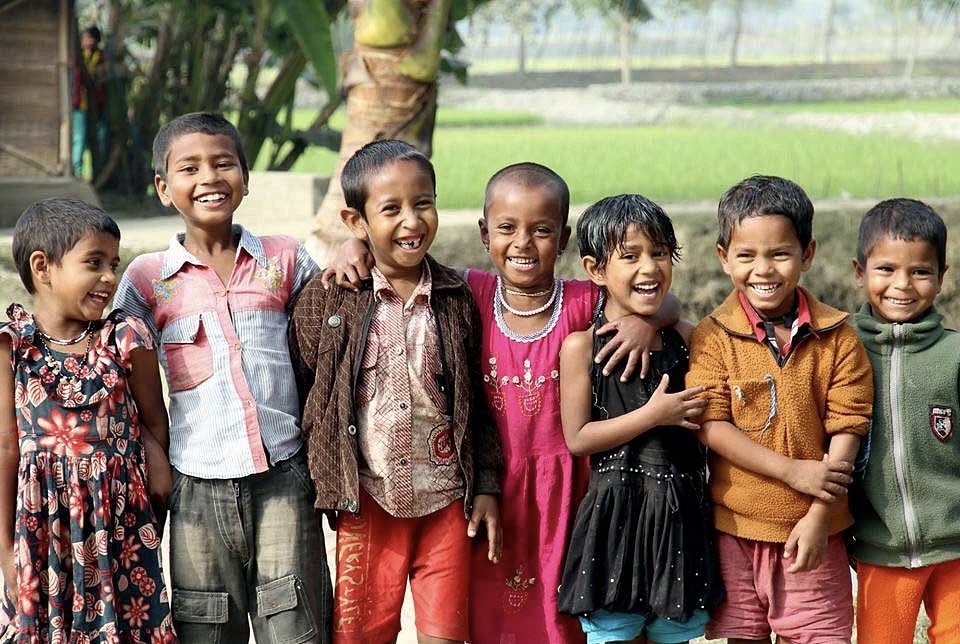Demographically, Bangladesh is a comparatively young country with an expanding youth population. The 2022 census reported that- 63.76% of the population is aged 34 or under, while 38.64% is aged 19 or under. According to the nationally representative Multiple Indicator Cluster Survey (MICS) 2019, almost 35.6% of the population are children aged 0 to 17. This youthful population gives Bangladesh the golden ‘demographic dividend’ period, where it can rip the benefits of large young age population to drive its economic growth. The children who are outside of the workforce, will continue this trend of demographic dividend for a significant amount of time in the future. Creating a sustainable future, thus, depends on facilitating proper growth for children. Children require more than just good nutrition. They need nurturing environment & protection from harm when they are vulnerable.
However, in Bangladesh the reality is different. The children face severe neglect, even going as far as being abused. According to the MICS 2019, over 45 million children under the age of 14 endure regular violence at home, and 7% of children aged 5 to 17 are working as child labourers. Hazardous child labour has serious implications, with children being 1.4 times more likely to experience psychosocial problems and 6 times more likely to drop out of school. Additionally, 51% of women aged 20-24 were married before the age of 18. According to UNICEF, every week, over 20 children die as a consequence of extreme violence and abuse which is intimately linked to child vulnerability. The HIES surveys indicate that poverty and vulnerability are higher among households with children. So, children are disproportionately poverty-affected. According to UNICEF, millions of children are living on the streets and are out of school. Online space isn’t safe for children either, about 20% of the children expressed that they were abused online.
The cost of not protecting our children from these conditions is often intergenerational. They may not manifest themselves immediately. Rather, they are expressed through the adults that the children become. If not taken care of during their developmental years, a child may grow up to be a problematic adult. They could also, in turn, impose violence on their children & this cycle continues. One study by the Overseas Development Institute (ODI) & Child Fund Alliance has shown that the cost of violence against children is almost USD 7 trillion globally. Estimates put the cost of violence between 2-8% of the global GDP. Among these costs, direct costs are incurred through- medical costs, legal fees, shelters etc. Meanwhile, indirect costs are- loss of wage, permanent physical impairment, psychological costs etc.
Bangladesh has various laws & policies for the protection of children. The Children Act of 2013 is the main legislature for child protection in the country. The law prohibits violence against children & ensures child protection through various measures, such as various degrees of punishment for the perpetrators of child violence. There are also other laws & policies, such as the Prevention and Suppression of Human Trafficking Act (2012), National Children Policy (2011), The Domestic Violence (Prevention and Protection) Act (2010) and many others. The problem is with the application & implementation of the policies & laws. Lack of justice against the perpetrators of violence against children allows for the cycle to continue. Ensuring punishment for such offences would work as a deterrence from further occurrences. At the same time, if the government abides by its own policies, it is bound to provide adequate protection for the children.
Early Childhood Care & Development Policy (2013) focuses on the early childhood development of children. It is when the children are most vulnerable and face the most rapid growth. Protection during this period is of utmost necessity. The ECCD policy of 2013 is a dynamic and modern policy in this regard. However, it lacks implementation. Again, the lack of a department for children affairs is showing up as a major issue in this regard. Some NGOs are engaged in child-protection activities. However, the lack of a unified national body is also preventing them from properly coordinating these activities amongst themselves.
Lack of representation on the children’s behalf is also a major issue. The constitution of Bangladesh & the Children Act (2013) keeps provision for any measure necessary for child protection; this segment of the population has been neglected by the policymakers largely, so far. The lack of representation on behalf of the children means there is no coherent body to hear their side.
Under the Ministry of Women & Children Affairs (MoWCA), which is responsible for the protection of both children & women, there is a Department of Women Affairs (DWA), which mainly represents the rights of women. However, there is no separate department for voicing & ensuring children’s rights & protection. All of our neighbouring countries, for example- India, Nepal, Pakistan & Sri Lanka have separate departments for children affairs. It is a necessity now to create a separate department for children under the entity of MoWCA. This is going to allow for a representative body for children. Moreover, this department can also work as a liaison between other relevant ministries; such Ministry of Labour and Employment, which works to prevent child labour; and the parliament itself.
If the existing policies are implemented, the laws are applied & the above-mentioned policy issues are resolved, it will create the rudimentary basis required for children’s protection. From there, we can move forward with more sophisticated interventions, regarding children’s education and their overall growth. The point that needs to be emphasized in this regard, is that- the massive loss that is occurred by not protecting them far outweighs the cost of protecting the children. Where it could cost a nation up to 8% of its future GDP due to violence against children, it would take them less than 1% of their GDP to protect them today. With such high return on investment, we need to immediately focus on this subject, in order to properly reap the benefits in the future.
This article was first published in the November, 2024 edition of the Thinking Aloud




RECENT COMMENTS